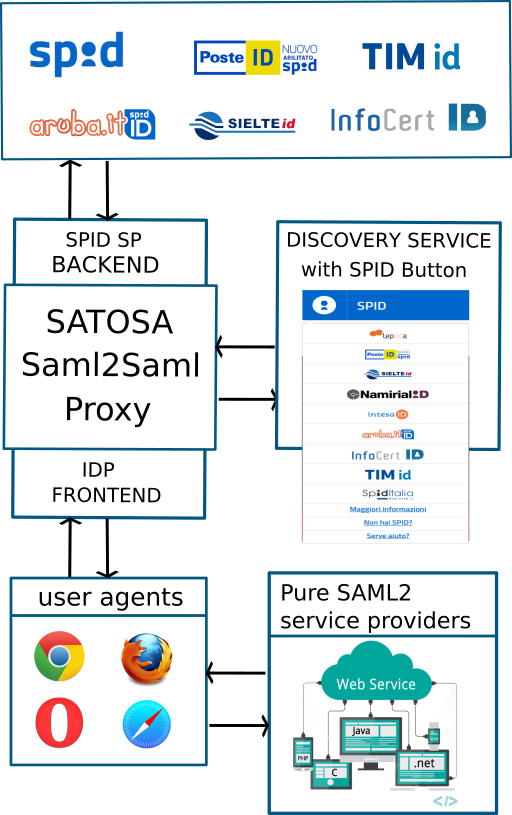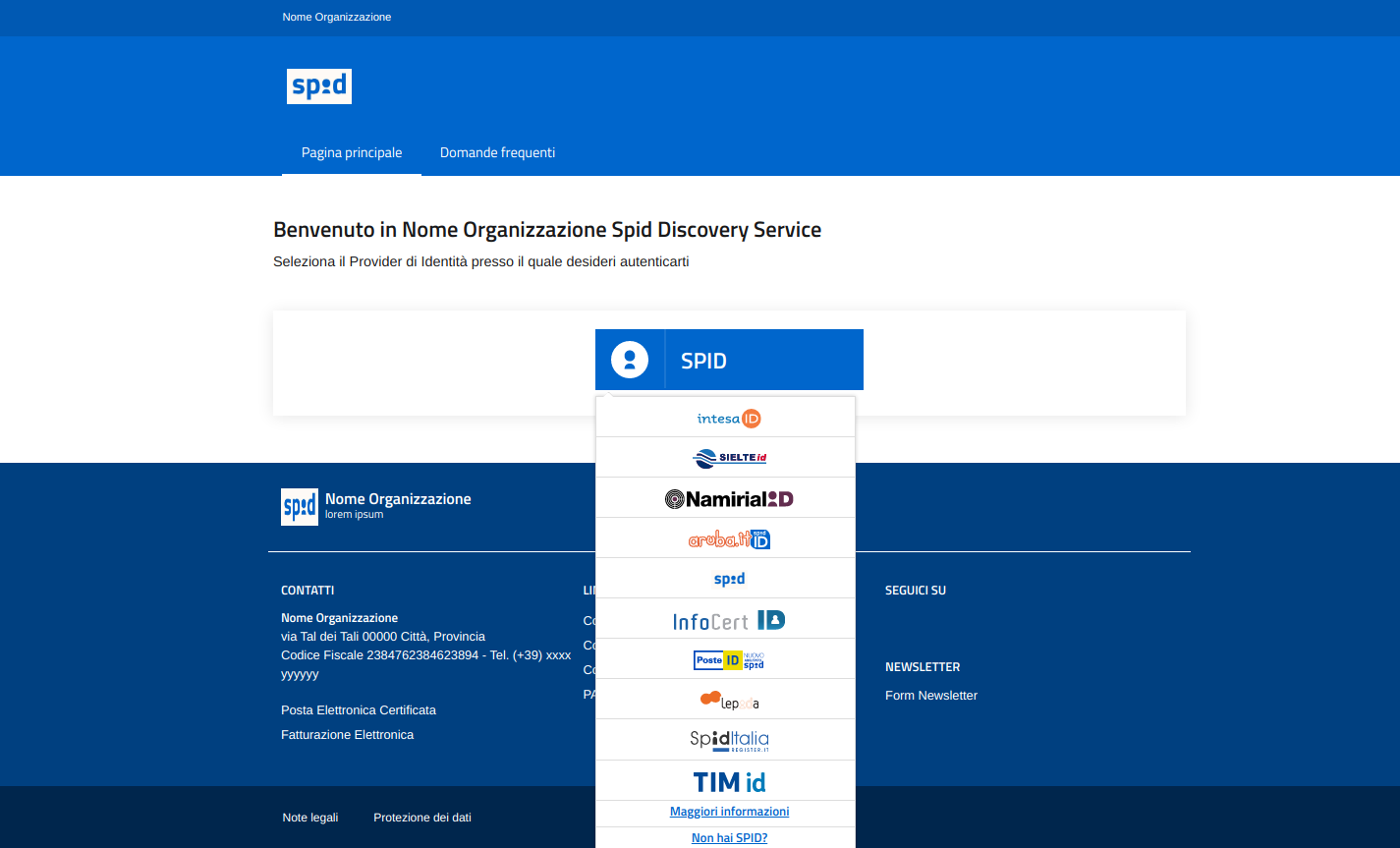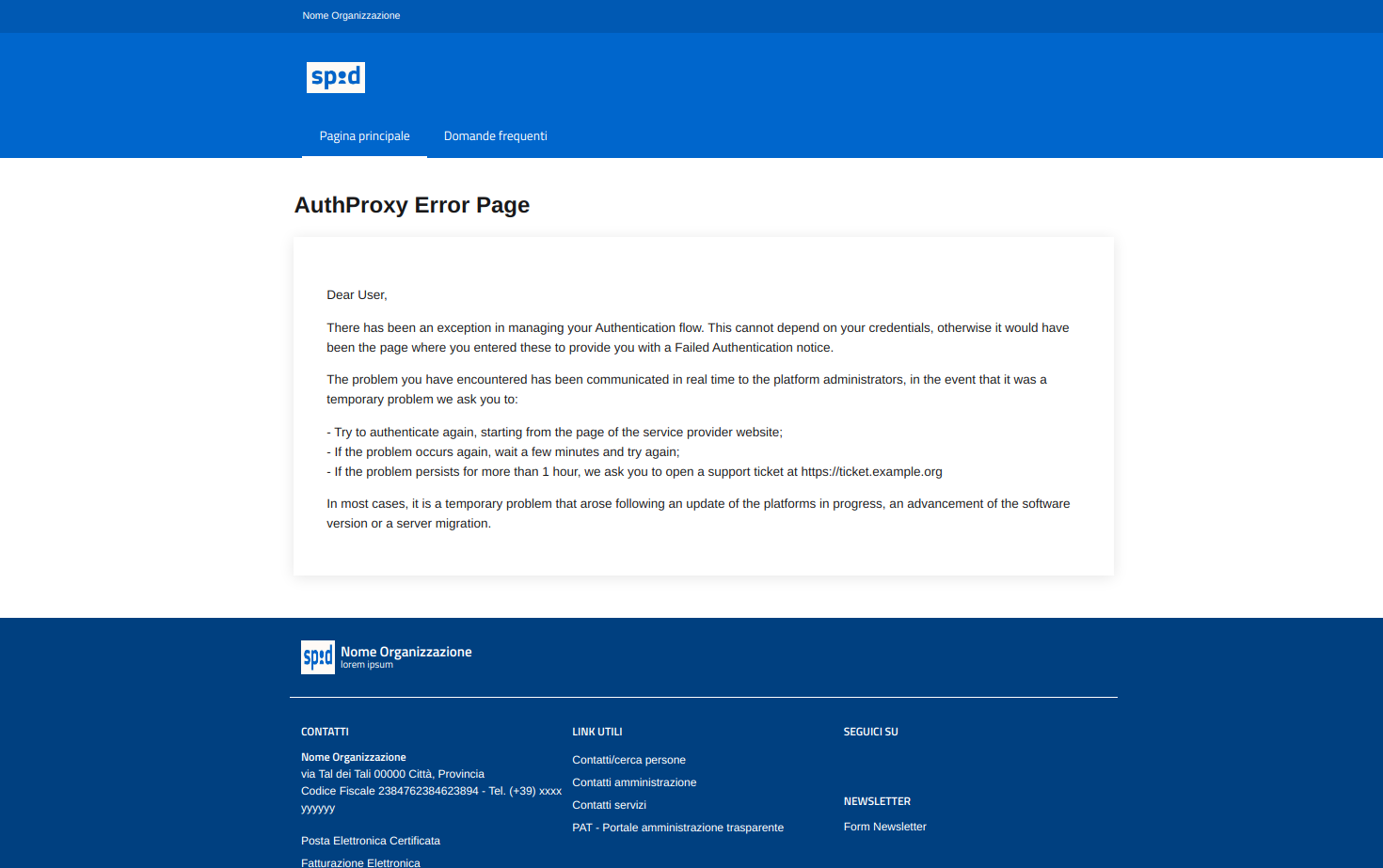Satosa-Saml2Spid 0.2.0
web application
A proxy that allows legacy Saml2 service providers to communicate with Spid Identity Providers
Pubblicato da UNIVERSITA' DELLA CALABRIA
Contatto tecnico Giuseppe De Marco
Vitalità:
69%
L’indice di vitalità, così come previsto nelle linee guida sull’acquisizione e riuso di software per la PA, è calcolato prendendo in considerazione le seguenti quattro categorie:
- Code activity: il numero di commit e merge giornalieri;
- Release history: il numero di release giornaliere;
- User community: il numero di autori unici;
- Longevity: l’età del progetto.
I range di ogni misura possono essere trovati nel file vitality-ranges.yml.
Stato di sviluppo: stabile
Funzionalità del software
Saml2 IdP
Saml2 SP
Saml2 proxy to SPID Saml
compliant to spid-saml-check validations
Customizable with additional backends, frontends and microservices
https://www.unical.it
Informazioni di dettaglio
Satosa-Saml2Spid 0.2.0
web application
Ultimo rilascio 2021-01-25 (0.2.0)
Tipo di manutenzione internal
Licenza Apache-2.0
Piattaforme
linux
web
Lista dipendenze
OSS
Python
Piattaforme abilitanti SPID
Conformità GDPR Misure Minime Sicurezza
Lingue supportate
Italiano
Inglese
Descrizione estesa
Satosa-Saml2 Spid is an intermediary between many SAML2 Service Providers and many SAML2 Identity Providers. Specifically it allows traditional Saml2 Service Providers to communicate with Spid Identity Providers adapting Metadata and AuthnRequest operations to the Spid technical requirements. This solution allows us to adopt multiple proxy frontends and backends to adapt and allows to communicate systems that, due to protocol or specific limitations, traditionally could not interact each other.
Short glossary:
- Frontend, interface of the proxy that is configured as a SAML2 Identity Provider
- Backend, interface of the proxy that is configured as a SAML2 Service Provider
- TargetRouting, a SATOSA microservice for selecting the output backend to reach the endpoint (IdP) selected by the user
- Discovery Service, interface that allows users to select the authentication endpoint


